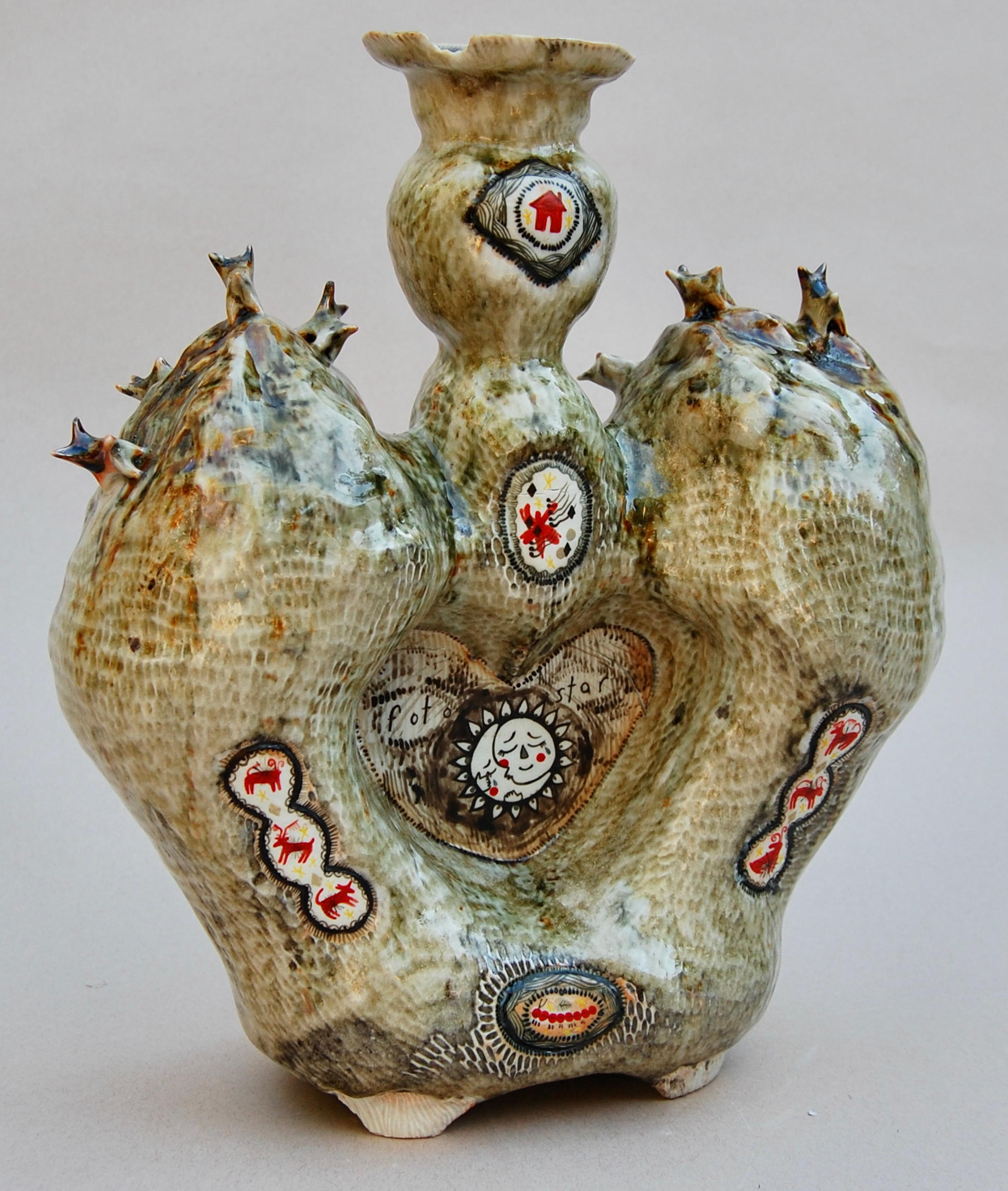AP Art of the Week
Spotlight on Artist Julia Ambros
The Elective’s digital art museum this week features a sculpture made by Julia Ambros from Coronado High School in Coronado, California.
Welcome to The Elective’s digital art museum, dedicated to the incredible work of AP Arts students. Each week we highlight a work or series created in one of the AP Arts concentrations—AP 2-D Art and Design, 3-D Art and Design, and AP Drawing (the AP Program also offers Art History and Music Theory)—as well as a statement from the artist (and, occasionally, their teacher).
From the first cave paintings to contemporary breakthroughs in virtually reality, art, in all its forms, has been a crucial way for people to process, make sense of, comment on, and grapple with the world around them. After more than a year of life in a pandemic, AP Art students have risen to the challenge of processing and making sense of the challenges—and opportunities—that have come from this perilous time. The work they submitted in their final portfolios is explicitly of the moment. It’s often challenging and provocative, but always insightful, inspiring, and expansive.
This week we feature a sculpture made by Julia Ambros from Coronado High School in Coronado, California.

Here’s Julia’s statement on the work:
“When I began considering topics for my Sustained Investigation, I was feeling very conflicted about bouncing between 2D and 3D mediums.
“I was strictly working in 2D mediums such as drawing and painting at the beginning of high school, and I absolutely loved it. I began working in ceramics during my sophomore year, which to my surprise, brought me even more joy than the 2D mediums I had been using. I began to spend my time sculpting and throwing instead of drawing or painting, which brought unexpected feelings of guilt. When I spent time working in Ceramics, I felt like I was neglecting the 2D mediums I loved so much before, but when I spent time working in 2D mediums, I felt I was abandoning a new skill. It felt like no matter what I did, I couldn’t strike a balance I would be happy with.
“This brought me to take a step back and look at my 2D and 3D work as a whole, instead of two separate bodies of work. I saw that my work across the different mediums held more similarities than differences and decided that it would be more productive to use my 2D work to inform my 3D work (and vice versa). This also came to be the premise for my Sustained Investigation, where I technically focused on translating the fluid and graphic qualities of my sketchbook work (which is the “root” of all my art) into 3D ceramic forms, while conceptually exploring niche instances of human love.

“One of the first and most challenging pieces I created was ‘Popocatépetl y Iztaccíhuatl.’ In this piece, not only did I find it challenging to begin to flesh out my concentration, but my choice of clay (porcelain) proved to be difficult to hand build with. I had to focus on building quickly and evenly while controlling dryness to avoid cracking.
“As I arrived at roughly the halfway point of my concentration, I created ‘The Solution to all my Problems,’ a tall and roughly textured abstraction of a human form. This piece also proved to be a challenge due to its large scale, and the impact of covid-19 at my school. Covid-19 made firing work very difficult, and greatly limited the amount of time I was able to spend glazing my work at school. This led me to make the decision to design my future pieces to be fired without using glaze, and instead focus on the natural texture of clay.
“The last piece I created was ‘House of Friendship,’ and while developing the details, I found that using multiple colors of clay in the same piece gave my vessels more diverse colors and depth without the use of glazes. I believe that having chosen a topic I was previously interested and personally invested in allowed me to find enjoyment throughout my Sustained Investigation, as well as being able to avoid boredom and maintain a consistent level of interest in my concepts.”
And here are a few other works from Julia’s portfolio:

An abstraction of a human form: the body of a human who fi nds sadness in solitude. The concept of an abstracted human form is layered with graphic, thickly layered 2D elements.

Affirmations and dreams: the love between an unhappy laborer and the promise of eventual happiness. Illustrations of nature layered on top of lace textures and carved text translate 2D details to 3D.

Dysmorphia, Insecurity, and Venus: the journey of one who has yet to learn to love their body. Found seeds embossed into clay paired with abstracted human forms translates 2D textures to 3D forms.

Simplified and abstracted miniatures of houses sit on graphic patterns and bold lines of writing.

Bold patterns and childish icons of hearts and girls illustrate the naivety of human love.
Student and teacher statements are lightly edited for length and clarity.


